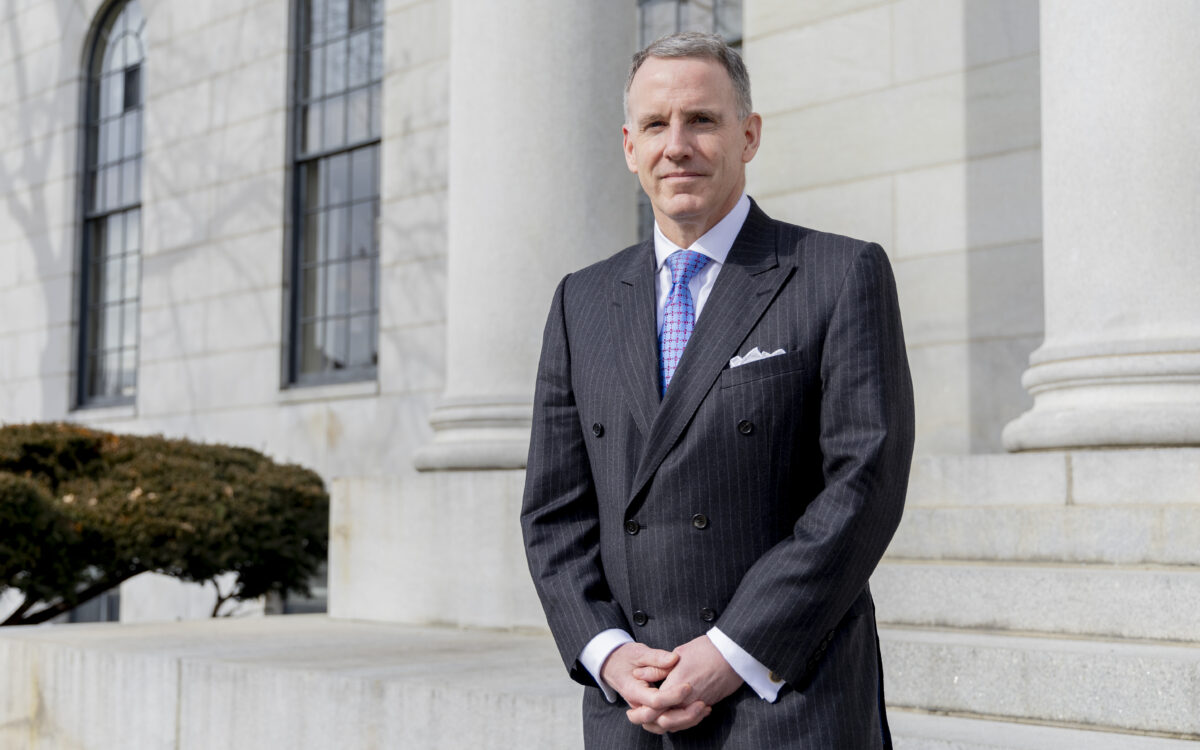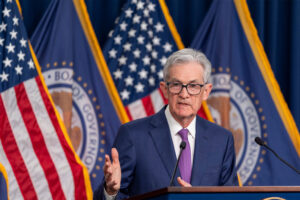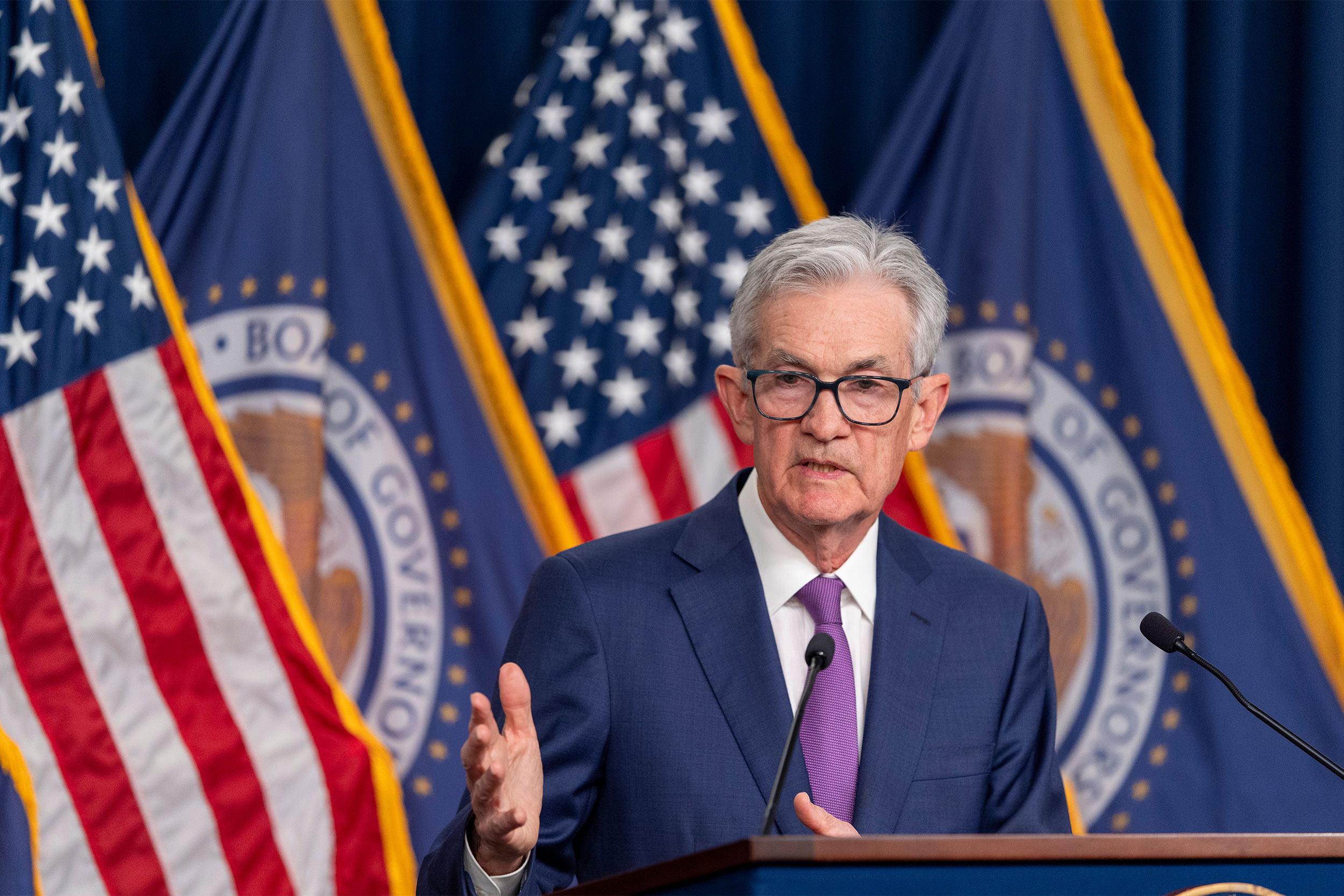
Oskar Schulz ’24 is co-author on a new working paper led by Harvard economist and former U.S. Treasury Secretary Lawrence H. Summers.
Kris Snibbe/Harvard Staff Photographer
Where money isn’t cheap, misery follows
Student’s analysis of global attitudes called key contribution to research linking higher cost of borrowing to persistent consumer gloom
Why has U.S. consumer sentiment remained stubbornly low even as the economy soars by traditional measures? Over the past six months, this gap has been portrayed as something of a mystery, with commentators offering up rationales ranging from political tribalism to flat-out bad vibes.
“Basically, all these people projected their own ideologies onto the issue,” said economics concentrator Karl Oskar Schulz ’24.
As a co-author on a new working paper led by Harvard economist and former U.S. Treasury Secretary Lawrence H. Summers, Schulz offers a more concrete explanation. The paper, titled “The Cost of Money Is Part of the Cost of Living,” highlights the overlooked impact of high borrowing costs on consumers who last year had to adjust household budgets in the face of a 23-year high in interest rates. Summers developed the argument with the International Monetary Fund’s Marijn A. Bolhuis and Harvard economics lecturer Judd Cramer. But Schulz, who grew up in Germany, bolstered the analysis by uncovering similar consumer sentiment gaps in other countries where borrowing costs have risen sharply.
“He really did important, creative work,” said Summers, the Charles W. Eliot University Professor, Frank and Denie Weil Director of the Kennedy School’s Mossavar-Rahmani Center for Business and Government, and Harvard president emeritus.
Schulz, who goes by his middle name, became immersed in the consumer sentiment gap last fall while taking a macroeconomics course with Summers and former Bank of England deputy governor Sir Paul Tucker. “I was working with Marijn and Judd on the topic of low consumer satisfaction, and why it didn’t correspond to unemployment and inflation,” Summers recalled. “I brought it up in my seminar, and Oskar was very interested.”
Summers had scrutinized the Consumer Price Index in a previous working paper with Bolhuis and Cramer. In that research, the economists noted that the CPI — the U.S. government’s expansive and closely followed measure of month-over-month inflation — has been subject to periodic methodological changes, including a 1983 redesign that jettisoned mortgage rates. As the authors note, that left the index with zero variables that account for borrowing costs.
These ideas reappear in the new paper, with the same three co-authors introducing an alternative CPI calculation that factors in mortgage interest payments, interest payments on personal loans, and vehicle leasing expenses. As a result, they wrote, their model “closes more than 70 percent” of last year’s gulf between inflation measures and findings from the University of Michigan’s gold-standard consumer sentiment index.
As Schulz recalled, popular chatter on the sentiment gap was blowing up just as he was taking Summers’ seminar. “The Economist wrote about it. The Wall Street Journal wrote about it. Everybody wrote about it,” he said. “It just became this puzzle.” When a piece in the Financial Times claimed that the gap was a U.S.-only phenomenon, Schulz, who has a secondary in computer science, undertook an analysis that ultimately uncovered a similar sentiment gap in his native Germany.
“Oskar showed once you looked at more countries, and once you corrected some data errors, the Financial Times had reached the wrong conclusion,” said Summers. “That was interesting!”
With Summers’ guidance, Schulz went on to make an important contribution to the working paper by investigating whether sentiment gaps corresponded with the cost of borrowing throughout Europe. He and his co-authors didn’t calculate anything like an alternative CPI for the 10 countries in their sample. Instead, they relied on existing economic indicators like unemployment, official consumer price indices, and government bond yields. Sentiment data was collected from the Consumer Confidence Index of the Organisation for Economic Co-operation and Development.
“What you do see very clearly is that in countries where the rates are much higher, the sentiment gap is much, much bigger,” Schulz said.
The analysis revealed far more than large sentiment gaps in Germany, Sweden, Austria, and Spain. According to Summers, it also served as a crucial check on the paper’s central claim that existing economic measures have failed to capture the pain of high borrowing costs.
“In doing statistical work, it’s important to test your hypothesis on data that wasn’t part of forming your conclusion,” Summers said. “That’s where Oskar’s use of international data comes in.”




